In the business world, the fierce competition between economic entities is well-received by the public. In sports, the “century war” between Nike and Adidas, Coca-Cola and Pepsi has drawn worldwide attention.
In the technology field, the battles between chip giants are equally exciting, and the “faith” of their fans is quite abundant. Since 2017, thanks to the rise of the Ryzen architecture, the verbal battles between Intel and AMD fans have become a highlight in the chip industry.
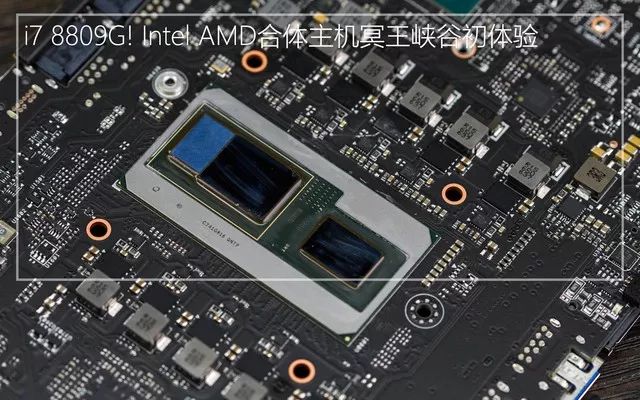
However, it is in the nature of businessmen to pursue profits, and capital has its own trajectory. Historically, Intel has supported AMD, and in reality, it has released the Kabylake-G series high-performance CPUs equipped with AMD Radeon GPUs.
This CPU series, which surprised many fans, has now been officially launched, and the flagship model i7 8809G is the subject of our preliminary review of Intel’s new generation NUC — the Pluto Canyon.
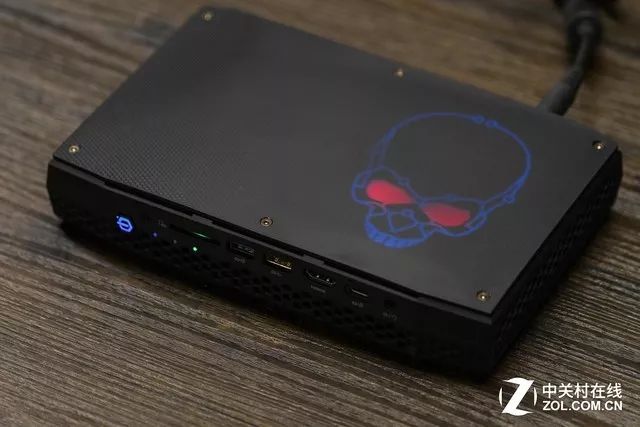 Intel Pluto Canyon NUC
Intel Pluto Canyon NUC
Represented by Intel’s own “Canyon” series NUC, the mini PC sector enjoys high popularity, with brands like Gigabyte, MSI, and Alienware also involved. Intel has specially designed some high-performance processors for this semi-marginalized mini PC market, continuing the bloodline of high-end CPUs equipped with high-performance integrated graphics, such as the i7 5775R and i7 6770HQ.
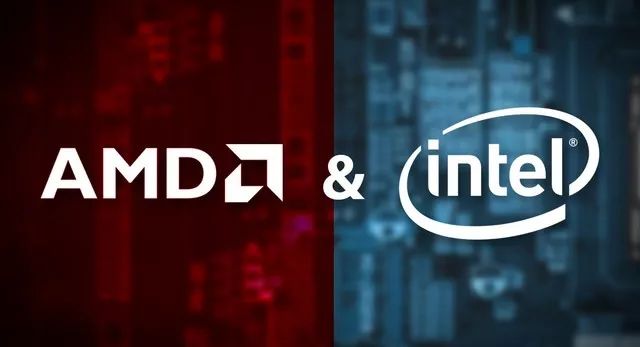
The historical relationship between Intel and AMD is complex.
The KabyLake-G series CPUs jointly launched by Intel and AMD (to be precise, Intel procured AMD Radeon GPUs for its own packaging) is a natural extension of Intel’s technology roadmap for high-performance GPUs. This time, however, AMD’s GPU has higher energy efficiency and significantly stronger absolute performance.
Before and after the product launch, facing questions about whether this joint solution could continue, Intel generally preferred not to overly promote it, indicating a cautious approach.
Combining recent news that Intel plans to restart independent development of high-performance discrete GPUs for the third time (the first two being the i740 in 1998 and Laraabee in 2008), we can see that Intel has been preparing for multiple scenarios.
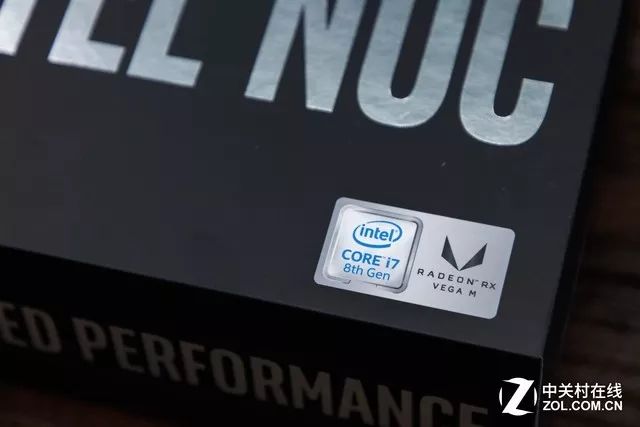 Intel NUC marked with Vega M but no AMD
Intel NUC marked with Vega M but no AMD
Back to the point, the i7 8809G is an advanced processor that combines Intel’s four-core KabyLake architecture with AMD’s Polaris-Vega hybrid discrete GPU, packaged together on the same PCB using advanced EMIB technology, balancing the efficiency of Intel’s CPU architecture with the stability and power of AMD’s GPU, making it highly competitive in the mini PC market and quite adaptable in thin and light laptop platforms.
The Intel Pluto Canyon NUC mini PC serves as the host for this processor, being the legitimate successor to the previous generation Skelton Canyon equipped with the i7 6770HQ CPU.
This article will introduce the basic hardware and software configurations, functional features of the Pluto Canyon host, and explore the basic performance and gaming performance of this host in conjunction with the technical characteristics of KabyLake-G. Due to time constraints, the overclocking characteristics of the i7 8809G, its full gaming capabilities, and further thermal testing of the Pluto Canyon will be gradually supplemented in subsequent tests.
—1—
Appearance and Expansion of Pluto Canyon
We received the international official version of the top configuration Pluto Canyon, packaged in Intel’s official packaging. The packaging box has a horizontal trapezoidal structure, with a huge Intel NUC logo on the front, specific model information in the upper right corner, and the AMD RX Vega M logo in the lower right corner, with promotional phrases about unlocked multipliers and expansion interface layout on the side.


Weight of the machine
The sample product comes with a VESA mount that can be directly hung on a monitor, with an adapter power reaching 230W, exceeding most mid-range gaming laptops. The product dimensions are 221×142×39mm, and the net weight is 1.28 kg, approximately 2.05 kg with the adapter, making it quite compact, between a 13-inch ultra-thin laptop and a 14-inch lightweight gaming laptop.
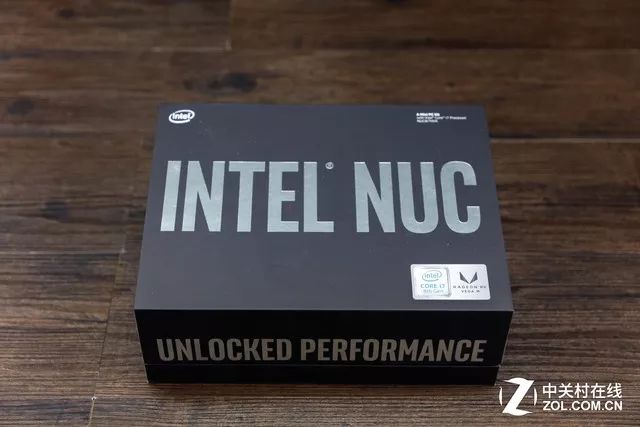
The machine’s construction is quite standard, with a flat box-like body having slightly beveled edges and some rounded shapes, but it is not very recognizable on its own. The main impression left by this machine is the large heat dissipation grille on the side and the various interfaces densely packed in the front and back. Compared to traditional gaming hosts like Alienware Alpha, the Pluto Canyon is much smaller in size but offers a richer variety of interface specifications.
It is worth mentioning that the glowing skull logo is printed above the top cover, and we will explain its internal structure in the subsequent teardown. Besides the imposing skull logo, the power button (blue) and SD card slot (green) are also adorned with backlighting.
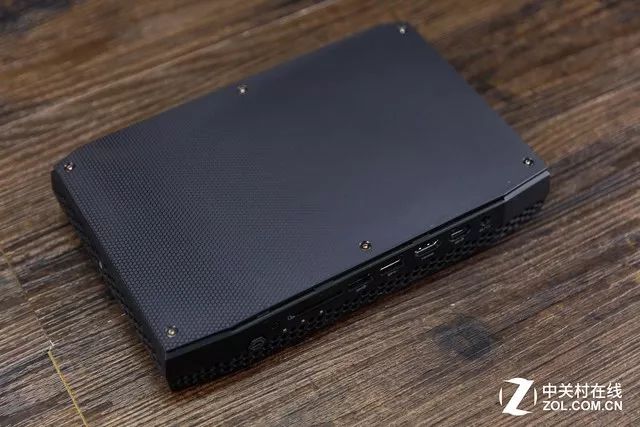
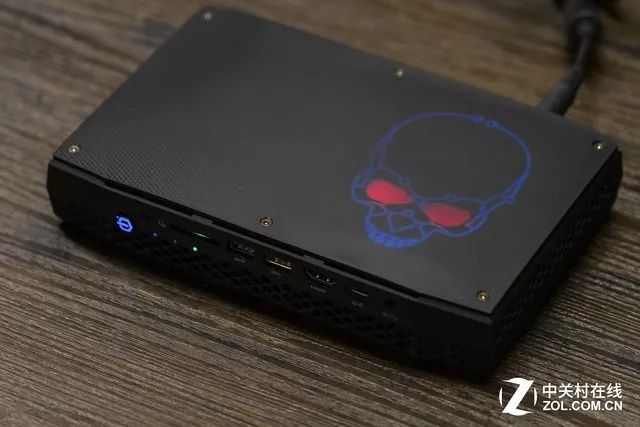 Skull logo and other backlighting
Skull logo and other backlighting
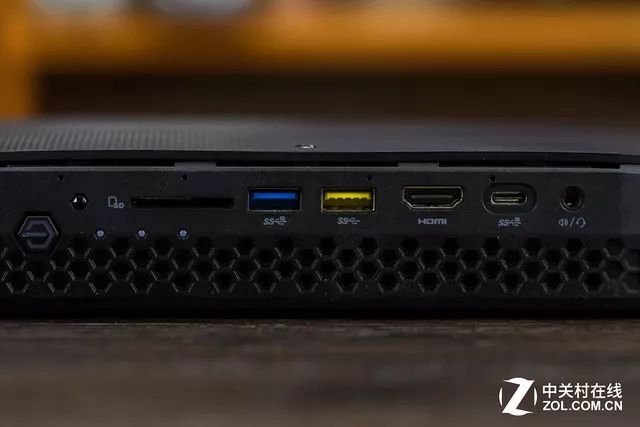 Front interfaces
Front interfaces
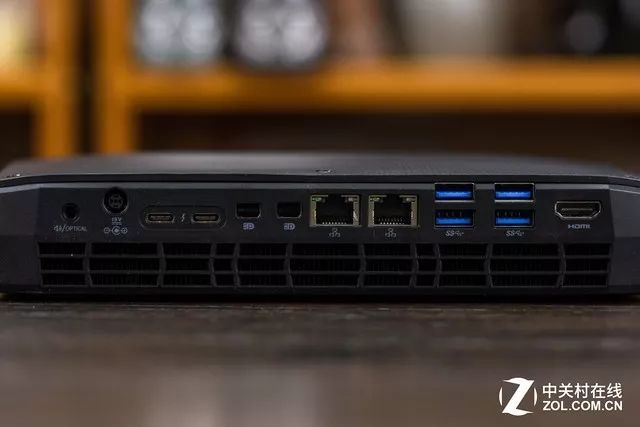 Rear interfaces
Rear interfaces
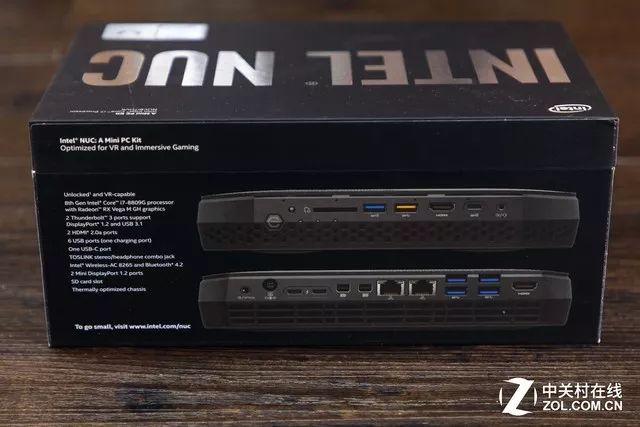 The interface packaging box clearly states this
The interface packaging box clearly states this
The front interfaces of the machine include: headphone jack, USB TYPE-C, two USB TYPE-A ports (yellow for power-enhanced 3.0, blue is 3.1), SD card slot, and one HDMI2.0a video output.
The rear interfaces are: two RJ45 Ethernet ports, four USB 3.0 ports, two Thunderbolt 3 (TYPE-C configuration), two mini DP video output ports, one HDMI2.0a video output port, and one headphone jack.
The number of USB ports on Pluto Canyon not only rivals that of mid-range desktop PCs, but its variety is unmatched. Considering the various backups of mini DP and HDMI, its video output capability is also extremely powerful, leaving any gaming laptop in the dust.
—2—
Internal Structure Teardown Overview
Next, we will perform a teardown of this compact player to see its internal structure. From the perspective of the machine’s fixation, after removing the top cover and the top metal panel, the main part of the PCB is housed within a soft shell structure, which is quite ingeniously designed.
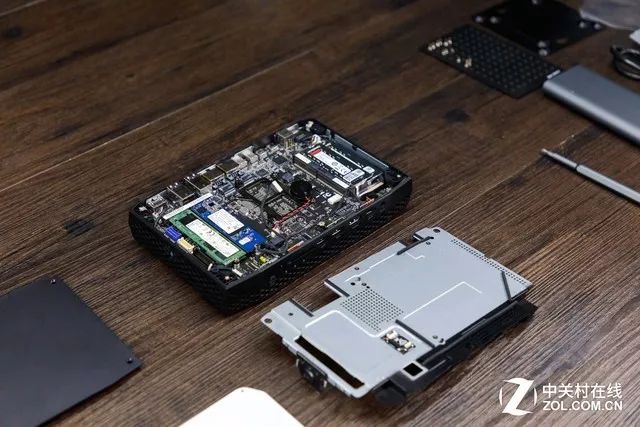
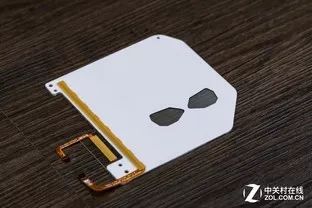

This is how the backlight is formed
The top backlight of this machine is revealed through a white sticker at the bottom of the body, and the two red eyes of the skull come from two large holes cut out of the sticker, making it look quite friendly.
The PCB CPU part is facing down, while the memory and solid-state drive are facing up, with the front interfaces connected to a series of wiring leading to a point on the motherboard. A CPU installation backplate is installed on the motherboard, and the Thunderbolt controller can also be seen.
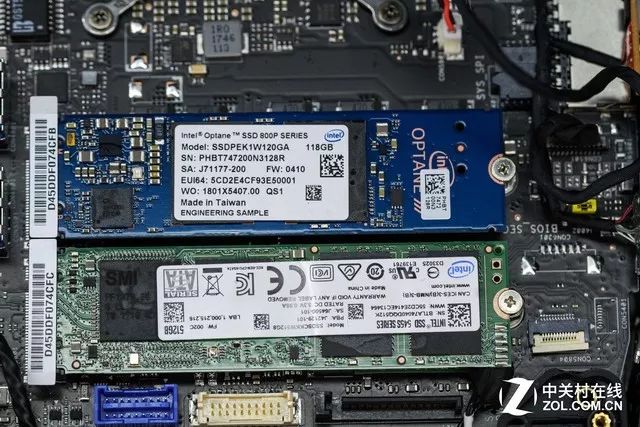
The sample machine’s storage components are quite luxurious, equipped with two 1.2V voltage DDR4 3200 8GB memory sticks, and also using Intel’s own powerful Optane 800P memory, which is the top configuration version of 118GB. Its standard solid-state storage is Intel’s SATA channel 545S solid-state drive, placed alongside the Optane in the M.2 interface.
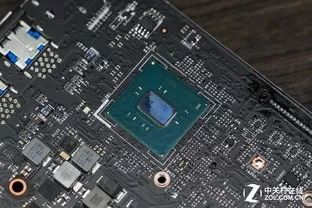
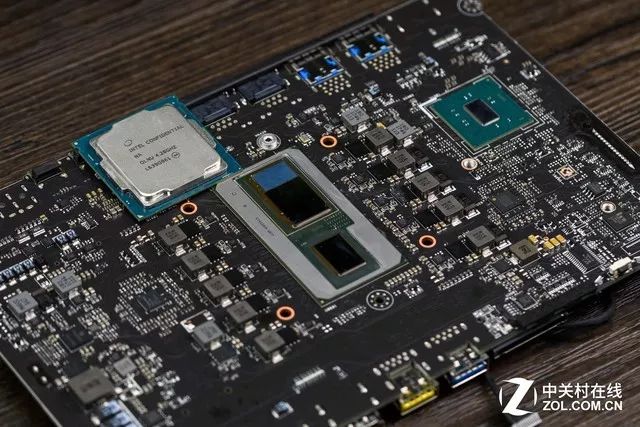 HBM on top, VEGA in the center, CPU below (next to it is the LGA CPU i3 7350K)
HBM on top, VEGA in the center, CPU below (next to it is the LGA CPU i3 7350K)
The PCB of Pluto Canyon is made with high-quality materials, and its power supply capability is quite robust. When we actually removed the PCB, we could clearly see Intel’s EMIB interconnect packaging mode, with HBM and AMD VEGA GPU closely placed together, communicating with Intel KabyLake CPU through internal channels, all laid out on one substrate. Comparing it with the i3 7350K next to it, we can see that this PCB has a relatively large area.
—3—
KabyLake-G and i7 8809G
The i7 8809G, representing KabyLake-G, is classified into the 8th generation Core family. Although KabyLake gives it away at first glance, this is not surprising. Currently, the i7 8000U series CPUs, widely used in the thin and light laptop sector, are codenamed KabyLake-U Refresh, indicating that the scope of the 8th generation Core itself does not have a clear standard.
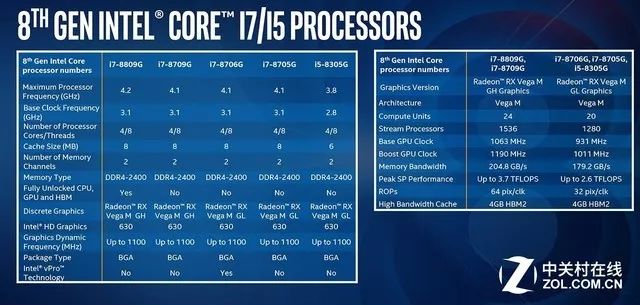 Series family
Series family
The KabyLake-G family also includes i7 8709G, i7 8706G, i7 8705G, and i5 8305G. Among them, the i7 8809G is specially supplied for NUC, with a power consumption of 100W (including GPU), featuring a complete Vega M display core; the i7/i5 87XX G versions should be 65W total power consumption notebook versions. The i5 8305G has 1280 stream processors and has been officially released in Dell XPS 15 2-in-1 laptops.
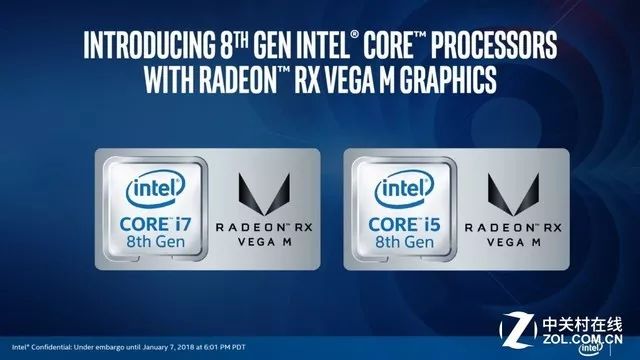 Full name is extremely long
Full name is extremely long
The full name of this series is quite lengthy — 8th Core Processors With Radeon RX Vega M Graphics, which means “8th generation Core with Vega M GPU”. We don’t need to fuss over the specific name of this family. Due to time constraints, we have not yet been able to access the BIOS of this machine; we will supplement the hardware identification information later.
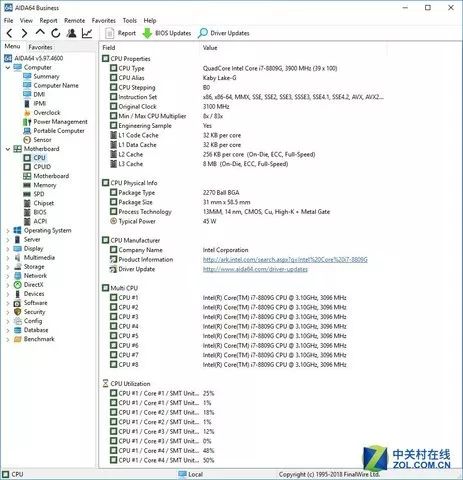
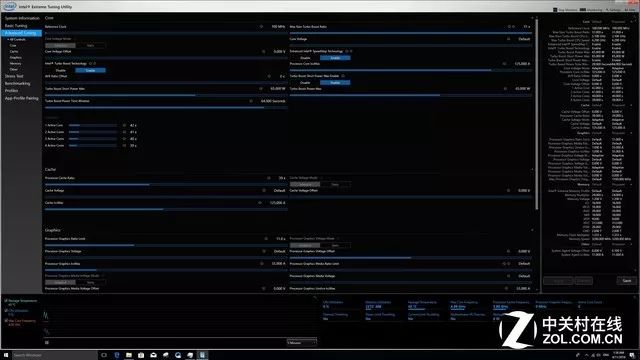
The official XTU overclocking tool
This machine comes with Intel’s official XTU overclocking tool, and combined with other software, we can read its specification information:
1. Four-core, eight-thread design, with 8MB of L3 cache, retaining GT2 level integrated graphics.
2. Base frequency of 3.1GHz, with a default thermal design power of 45W.
3. The four-core full load turbo frequency is 39, with a maximum single-core turbo frequency of 4.1GHz.
4. The PL1 long turbo frequency power consumption is 65W, sustained for 64 seconds, and the PL2 instantaneous turbo frequency power limit is also 65W, lasting 2.44 milliseconds. This processor is unlocked, allowing for frequency adjustments, which makes the “Unlock” on the packaging understandable.
—4—
CPU: i7 7700T 8th Gen Core Version
According to relevant background information, KabyLake-G was planned to start in 2015. Considering that the KabyLake codename officially appeared in 2016, we can think of KabyLake-G and the regular 7th generation Core as being parallel in the same period, using the same 14nm process technology.
Based on the full load frequency, we can infer that the CPU performance of this hybrid processor is roughly between the i7 7700T and i7 7700, and considering its default power limit, it can be understood as an enhanced version of the i7 7700T or a slightly downclocked version of the i7 7700.
 Wprime 2.10 1024mb 195 seconds
Wprime 2.10 1024mb 195 seconds
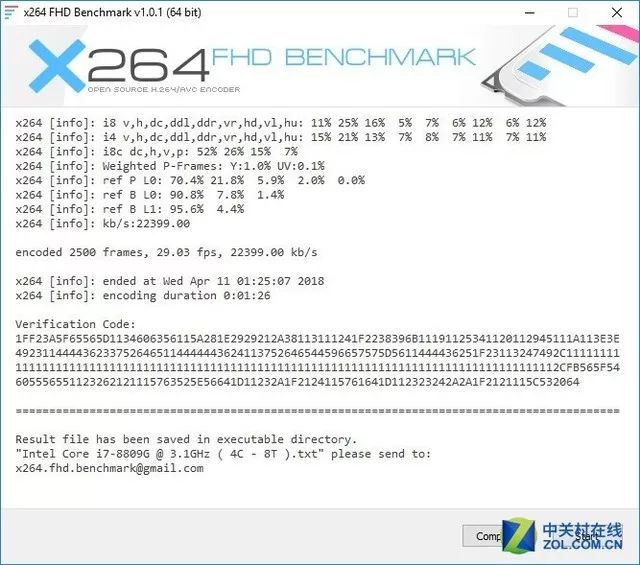 X264 HD Benchmark 29.03 frames/second
X264 HD Benchmark 29.03 frames/second
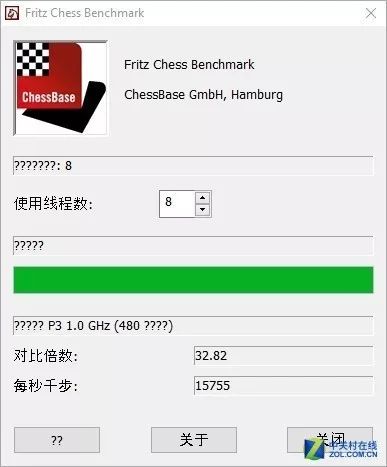 Chess 15755
Chess 15755
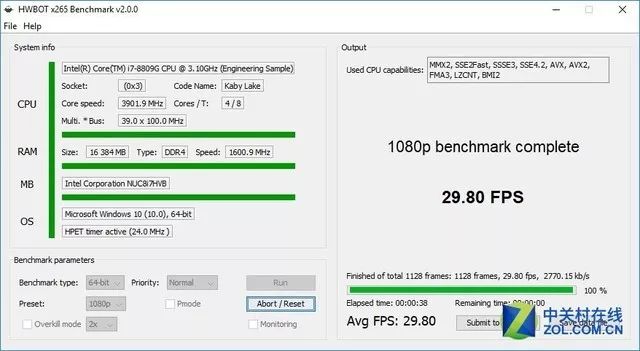 HWBOT 29.80 frames
HWBOT 29.80 frames
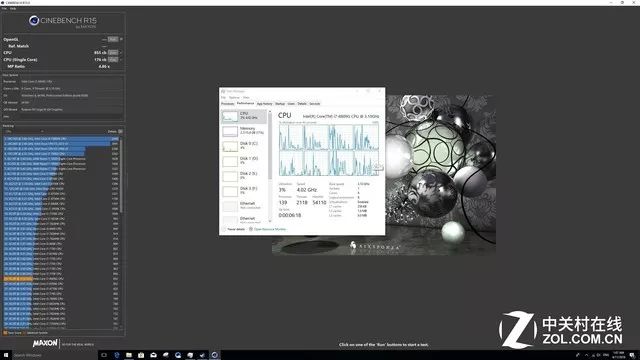 Cinebench R15 Multi-core 855CB
Cinebench R15 Multi-core 855CB
Our measurements also confirm this point, as the i7 8809G slightly lags behind the i7 7700 in most tests. Considering that this Pluto Canyon has DDR4 3200 dual-channel XMP frequency enabled by default, the i7 8809G’s performance should be closer to that of the i7 7700T.
Due to time constraints, this article has not been able to compare the performance of the i7 8809G with other CPUs, and the Vega GPU has not been compared either. Related content will be released in our in-depth testing next week.
—5—
GPU: Polaris + HBM Transforming into Vega
For the GPU, AMD and Intel officially named this heterogeneous CPU RX Vega M GH, but the software layer recognizes it as Polaris 22, which is the Polaris architecture. This GPU is bundled with HBM2 memory, and its architecture should be a progressive form between Polaris and Vega.
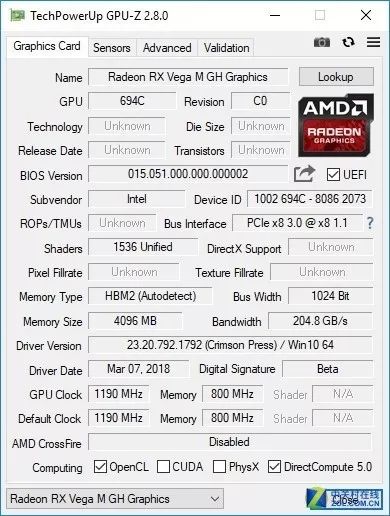 GPU-Z information ROP recognition cannot be done
GPU-Z information ROP recognition cannot be done
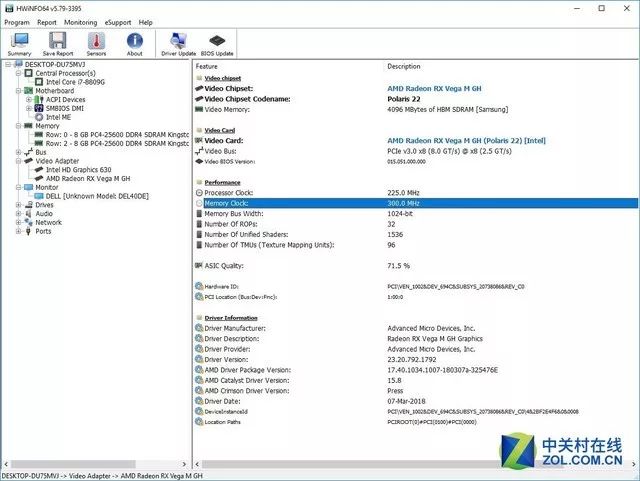 HWINFO recognition
HWINFO recognition
There are rumors that this GPU has up to 64 raster units, but our current software readings show that its ROP still only has 32 units, which needs further verification. In other specifications, this GPU has 1536 stream processors, 96 texture units, a core frequency of 1190MHz, and uses 4GB of HBM2 memory with an equivalent frequency of 1.6GHz, with a bandwidth of 204.8GB/S.
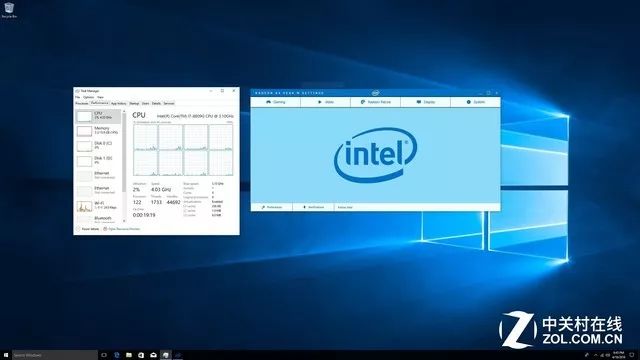 Intel with AMD’s heart for drivers
Intel with AMD’s heart for drivers
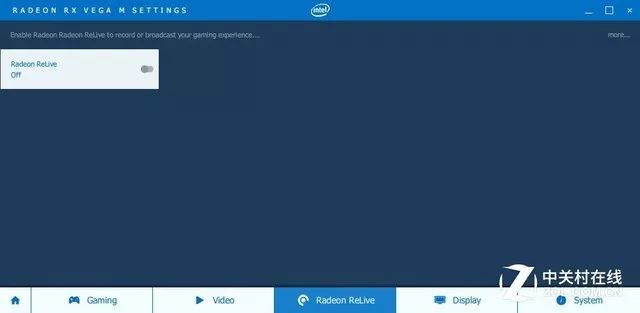 Intel with AMD’s heart for drivers
Intel with AMD’s heart for drivers
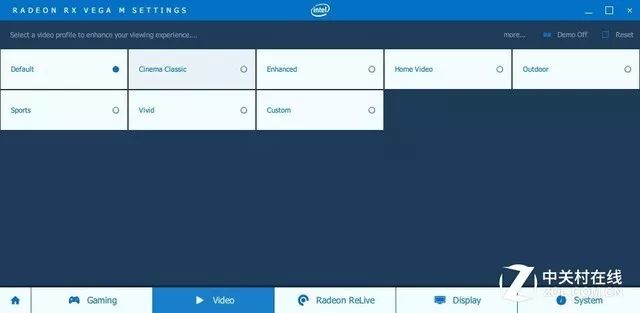 Intel with AMD’s heart for drivers
Intel with AMD’s heart for drivers
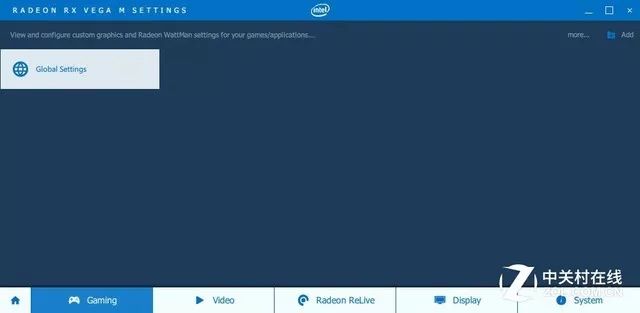 Intel with AMD’s heart for drivers
Intel with AMD’s heart for drivers
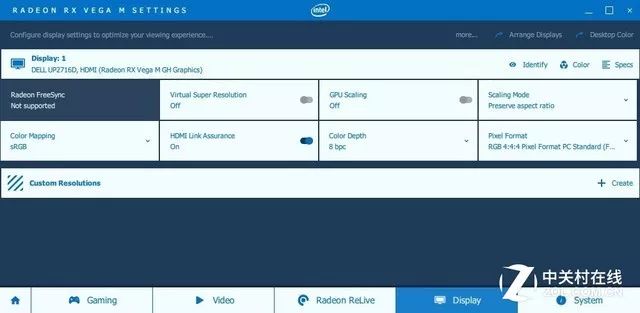 Intel with AMD’s heart for drivers
Intel with AMD’s heart for drivers
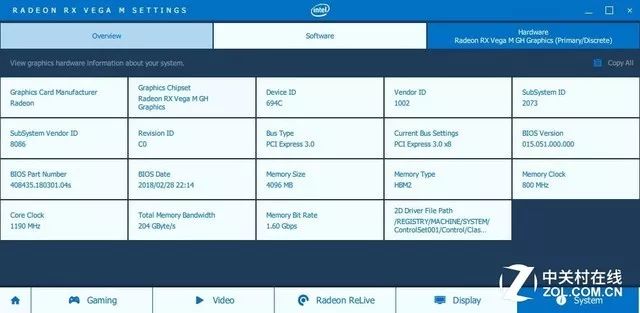 Intel with AMD’s heart for drivers
Intel with AMD’s heart for drivers
From a theoretical specification standpoint, this GPU’s core computing power is roughly between RX 470D and RX 470, stronger than NVIDIA’s GTX 1050ti. If we consider the HBM2 bandwidth boost, it is understandable that some fans expect it to reach the performance level of RX 480 or GTX 1060 Max Q.
Intel uses a driver package from AMD but has performed its own “decoration” on the driver UI — all AMD logos have been removed, titles prominently feature the Vega brand, and all red has been replaced with blue. This version of the driver UI looks very clean and unique.
—6—
3DMark Graphics Card Theoretical Performance Comparison
We used the famous 3DMark series testing software to conduct theoretical performance tests on this very interesting GPU, with all tests conducted under default drivers and high-performance power mode.
 Time Spy Extreme 1349 points
Time Spy Extreme 1349 points
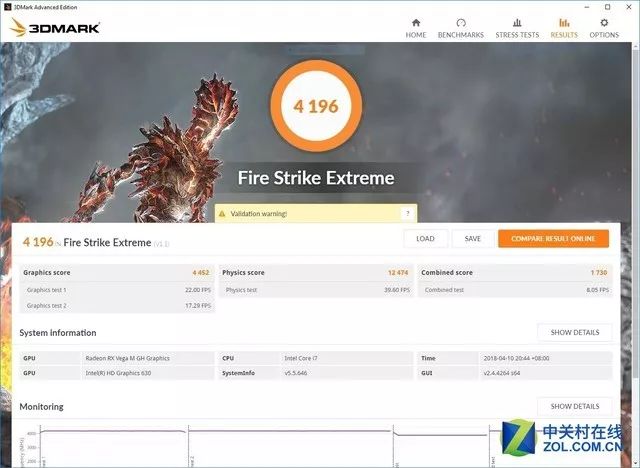 Firestrike Extreme 4196 points
Firestrike Extreme 4196 points
 Time Spy 3067
Time Spy 3067
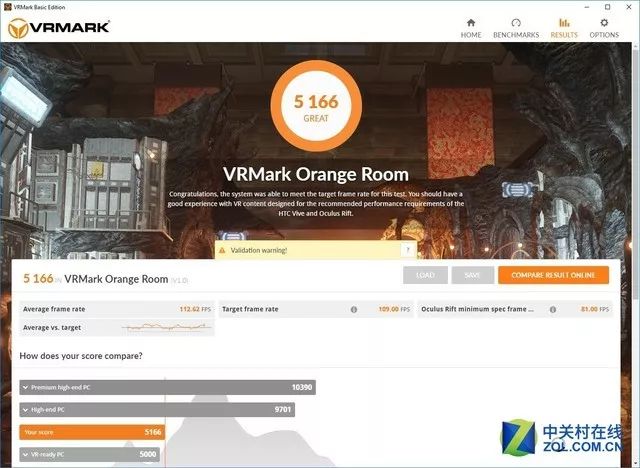 Vr Orange Test
Vr Orange Test
Due to the different levels of stress in 3DMark tests, the performance gap between this Vega GPU and the expected target objects is not consistent.
First, it is clear that purely based on 3DMark scores, GTX 1050Ti is not a competitor to Vega M GH, as they are not even in the same league. The cut-down version of Vega M should be positioned similarly to GTX 1050Ti, while the full version of Vega M GH’s performance is between the non-reference R9 290 and RX 470 non-reference, as well as the mobile RX 580. In terms of NVIDIA, the lower limit is around the level of GTX 980M, while the upper limit is around the Max Q GTX 1060 or non-reference GTX 970.
Typically, the score difference between Vega M GH and mobile RX 580 and Max Q version GTX 1060 is between 10% and 15%.
—7—
Performance and Temperature of Three Major Games
We chose three recent popular games to verify the gaming performance of Vega M GH: “Assassin’s Creed Origins,” “Far Cry 5,” and “Rise of the Tomb Raider,” all of which are high-quality AAA titles of the new era. All three were run at 1080P maximum quality using the built-in benchmark of the games.
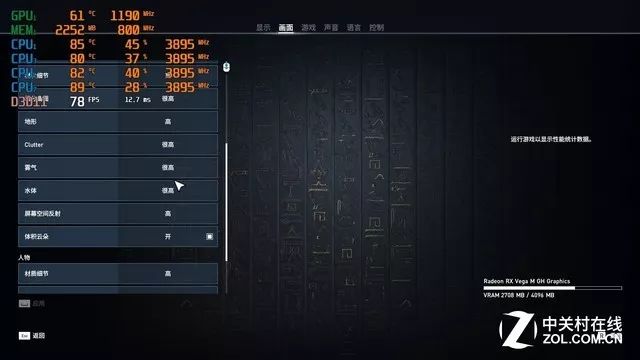 Assassin’s Creed settings
Assassin’s Creed settings
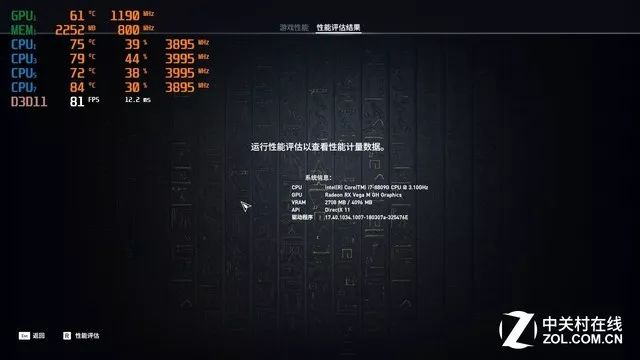 Assassin’s Creed settings
Assassin’s Creed settings
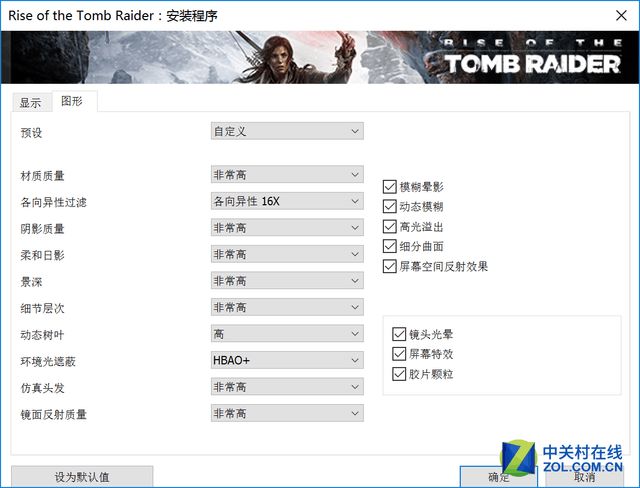 Tomb Raider 10 quality settings
Tomb Raider 10 quality settings
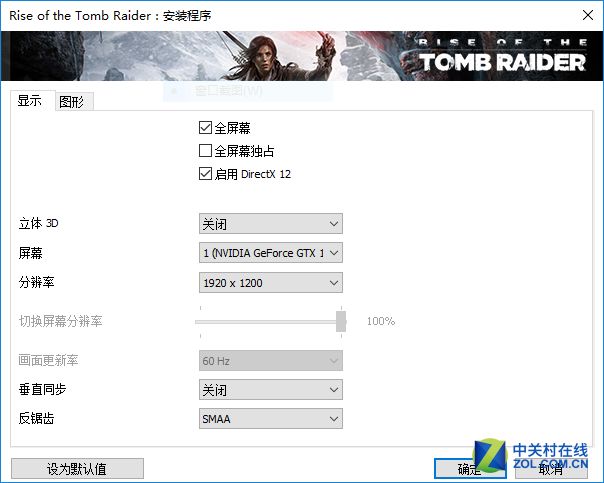 Tomb Raider 10 quality settings
Tomb Raider 10 quality settings
 Far Cry 5 settings
Far Cry 5 settings
 Far Cry 5 settings
Far Cry 5 settings
 Far Cry 5 screenshot
Far Cry 5 screenshot
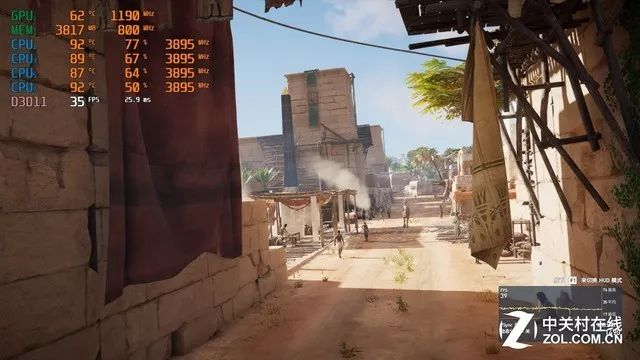 Assassin’s Creed Origins screenshot
Assassin’s Creed Origins screenshot
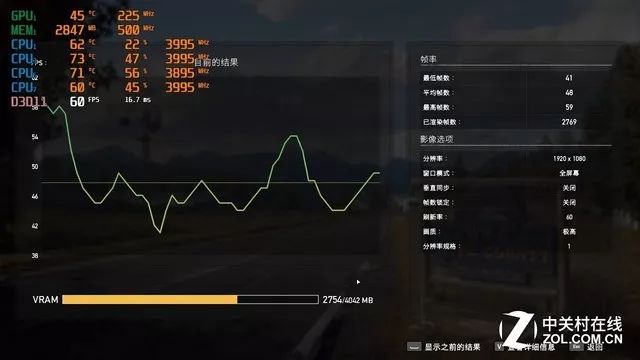 Far Cry 5 average frame rate 48
Far Cry 5 average frame rate 48
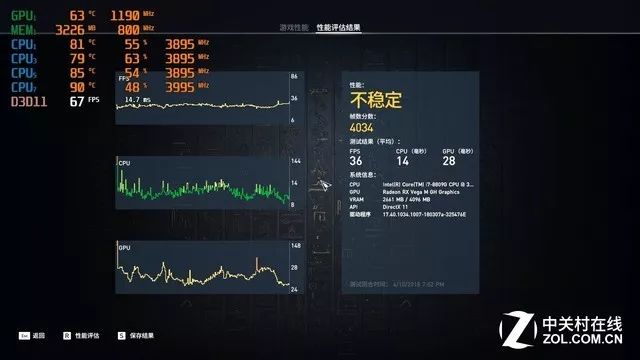 Assassin’s Creed average frame rate 36
Assassin’s Creed average frame rate 36
 Tomb Raider 10 average frame rate 43.89
Tomb Raider 10 average frame rate 43.89
First, we can confirm that AMD Vega M GH is fully capable of playing most games at 1080P resolution with high settings, achieving frame rates between 40 and 50 in both Tomb Raider 10 and Far Cry 5, providing a smooth experience. If the graphics settings are lowered, it can run perfectly smoothly.
Even though Assassin’s Creed presents a bit more pressure, it is one of the most demanding games currently, and Pluto Canyon’s performance is completely satisfactory.
However, compared to the mobile RX 580, RX 470, or Max Q version GTX 1060, there is likely still a significant performance gap, possibly closer to GTX 1050Ti. Considering that the GPU temperature during gaming rarely exceeded 65 degrees Celsius, it is expected that moderate overclocking could unleash the GPU’s performance potential.
However, the gaming CPU temperature of Pluto Canyon is quite high, occasionally exceeding 90 degrees Celsius, which is worth noting.
—8—
Overall Storage Performance and Future Outlook
As mentioned earlier, the storage configuration of the Intel Pluto Canyon NUC sample machine is a combination of Optane 800P 118GB and Intel 545S 512GB, with a memory configuration of dual-channel DDR4 3200 (Kingston HyperX) and default dual-channel enabled. Due to time constraints, we will release independent performance tests for the Optane 800P later.
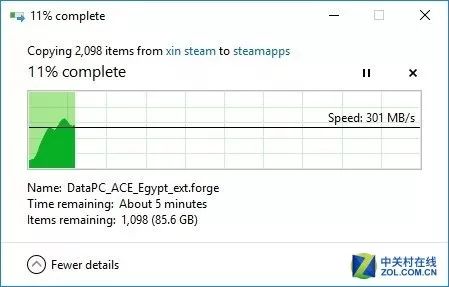 Actual copy speed (USB 3.0 hard disk box to Intel 545 solid state)
Actual copy speed (USB 3.0 hard disk box to Intel 545 solid state)
When we copied three legal games from the mobile hard drive to the main hard drive of Pluto Canyon — the SATA channel 545S, the copy speed stabilized above 300MB/S, which is quite impressive.
Through our observations, the Optane 800P in Pluto Canyon is configured as an independent system disk and has not enabled acceleration features. In practical situations, the Windows 10 1709 system installed on the Optane 800P operates remarkably fast, with response times far exceeding those of ordinary M.2 solid-state drives like the SM961, even though its sustained read and write speeds are not as high.
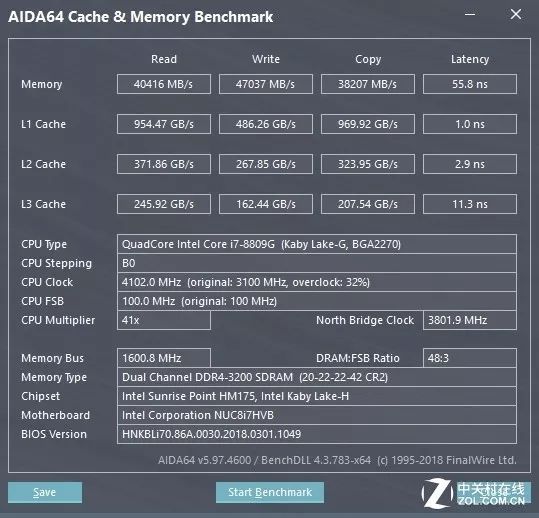 AIDA 64 memory throughput
AIDA 64 memory throughput
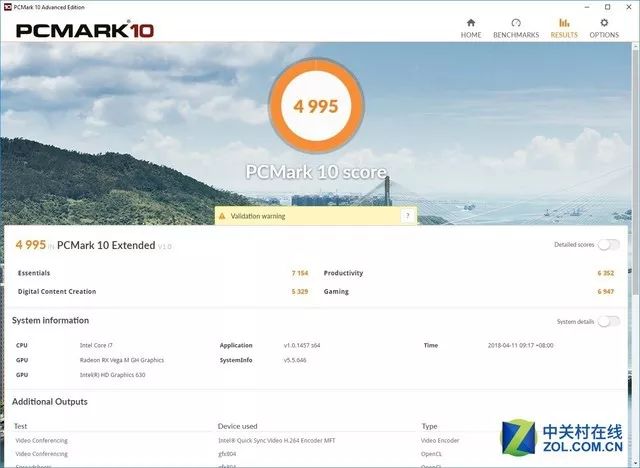 PCMark 10 expansion mode 4995
PCMark 10 expansion mode 4995
The i7 8809G in Pluto Canyon supports unlocked multipliers and memory overclocking without any issues, and the Kingston DDR4 3200 achieved impressive memory throughput test results on this machine.
Thanks to the high-frequency memory and strong SSD system, the Pluto Canyon scored around 5000 points in the PCMark 10 expansion mode, closely following top gaming laptops and high-end mobile workstations, showcasing remarkable overall strength.
Summary and Outlook:
Regarding Pluto Canyon itself, its highly redundant video and USB interfaces make it outshine the vast majority of all-in-one PCs and gaming laptops. Its comprehensive, high-spec expansion capabilities reflect Intel’s strong technological prowess and industry leadership, as well as the designers’ full grasp of gamers’ psychology and needs, making it very user-friendly and practical, worthy of serious study by all gaming PC practitioners.
In terms of appearance and body design, Pluto Canyon is compact and highly integrated, with hardware design that is more scientific and reasonable than that of gaming consoles from Microsoft and Sony. The substantial efforts put into thermal specifications have also yielded relatively satisfactory results. Aside from some minor shortcomings in the “flashy” visual aspect, the body design of Pluto Canyon has nearly reached its best.
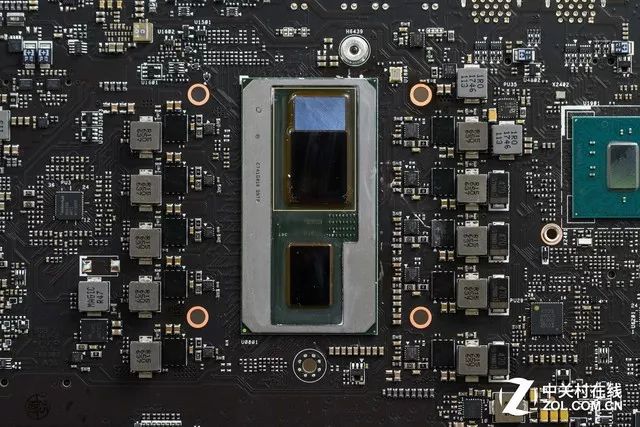 Close-up of i7 8809G CPU
Close-up of i7 8809G CPU
When it comes to the i7 8809G and other series KabyLake-G processors launched in cooperation with Intel and AMD, the CPU performance is not affected by the mini host size, but the temperature is slightly high; the GPU part’s temperature control is quite effective, and the overall performance has basically met the general expectations of users, without any throttling occurring, but there is still quite a distance from the fans’ aspirations to match the GTX 1060.
The thermal design of the Intel NUC is relatively reasonable, and its own products also have high specifications in storage, allowing this Pluto Canyon to demonstrate extraordinary quality. Other KabyLake G products from brands like Dell are also worthy of our anticipation. Intel’s strategy of using AMD GPUs in its products appears to be fundamentally successful at this point.
The price of this machine in China is still unknown, while the overseas benchmark price is around $1000, which is quite cost-effective. It is worth noting that the retail version of Pluto Canyon currently does not appear to include storage components.
